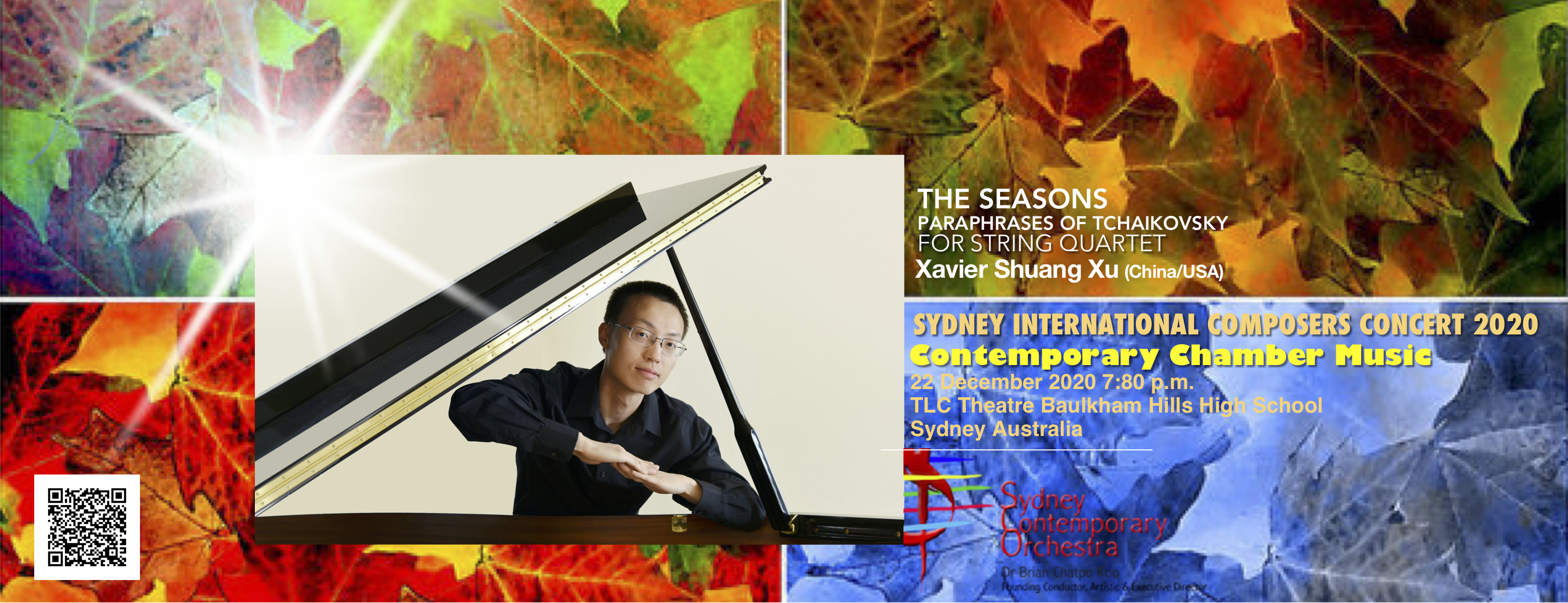Shuang Xu is a Chinese composer, physicist and engineer. His portfolio consists of more than 30 works of a variety of genres, among which are three piano concertos, one violin concerto, several pieces for string quartet and a quintet for Asian instruments.
Born in Nanjing, China, Xu took an unusual path in musical education. Beginning with piano playing around the age of fourteen, he delved straight into the analysis of contemporary music and compositional theory before studying music history and composition by himself. For ten years in higher education institutions pursuing a degree in physical science. Xu was heavily engaged in musical activities at the same time. Asa pianist, he was a keen advocator of contemporary music and performed a lot of new music including his own in his undergraduate school in China. Little known as a composer, nonetheless he has received several private commissions, and his works have been performed in China, USA, France, and Austria.
Xu’s music style spans over a broad spectrum, and his work often exhibits modern techniques applied to conventional sound materials. A notable aspect in his output is that many of his compositions are rooted in nature in a unique way owing to his specialty in physics. He has observed that many natural processes, viewed at a fundamental, physical level, bear remarkable resemblance to the composers’ methods of organising, processing and developing musical materials, sometimes termed as “musical logic” in music theory (Taylor 1974; Ries, 2000). With such realizatdion, he has attempted at musicalising natural phenomena of nature-inspired music that is not, in the conventional sense, an emotional expression invoked by nature, but rather a musical organism following certain patterns originated in nature.
The highlights in his category include Schrodinger’s Violin, Fractals, Silica, Basis Transformation and Phaes Transition, all of which are musical representations of the title. Xu has gone even further and borrowed concepts in subjects besides science. For example, in his string quartet Satin, the four instruments are orchestrated to knit a certain musical texture, and in Ballade, the music materials role-play as different social classes in a setting of ancient China.
In addition to music, Xu enjoys molecules and mountains. He holds a PhD in chemical physics from the University of Colorado at Boulder, USA. He is currently living in San Diego California.

SEASONS
The Seasons is a set of paraphrases of Pyotr Ilyich Tchaikovsky’s famous eponymous suite for piano. It consists of four movements and each represents a season characterized by its unique soundscape realized by the employment of certain instrument techniques. That is to say, the sounds and timbres and the atmosphere built by them become the theme of each movement, whereas the musical materials of Tchaikovsky are woven into the big picture primarily as symbolic and witty elements. A visual analog would be viewing multiple paintings with different prisms and lenses, which capture parts of each painting and present them through the unique distortion of that optical system. Tchaikovsky’s materials are quoted in an order that is consistent with the typical climate of the temperate zones in the north hemisphere, as tabulated below:
Spring – March, April, May
Summer – June, July, August
Autumn – September, October, November
Winter – December, January, February
To echo the original work of Tchaikovsky, I also composed a poem for each movement in both Chinese and English.
Spring:
The breeze sweeps my face, flipping my sleepy eyes, 风拂面,撩睡眼,惊睹一枝绿艳
Suddenly I see, a full branch of green colors.
Summer:
The rain pounds the ground, wetting my shirt, 雨打地,湿衬衣,静赏万丈霹雳.
Silently I watch, a long stretch of lightning bolt.
Autumn:
The sun sets on the field, plating the golden leaves, 日落野,镀金叶,独踏覆草石阶.
Solely I tramp, the stone steps covered by grass.
Winter:
The snow swings in the heaven, irking the gods, 雪漫天,扰神仙,怒断冰封树尖.
Grumpily I break, the treetops sealed by ice.
